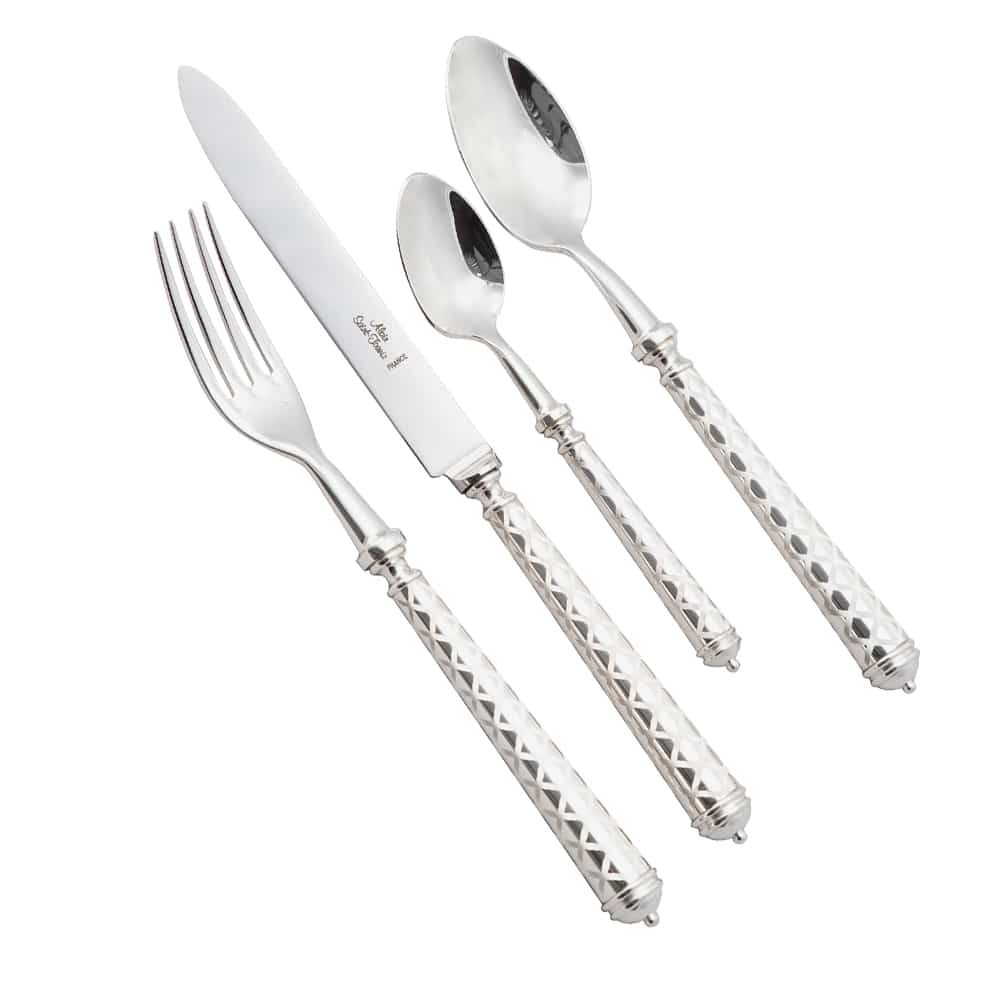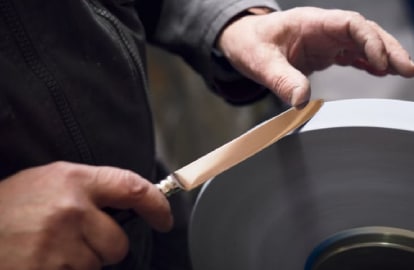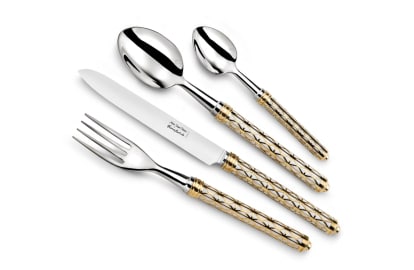The art of the table and cutlery is endless. The importance of the quality and care of crockery is often overlooked. Preserving the shine and strength of your cutlery is essential.
Do you have a stainless steel cutlery set? There are a few simple tips for looking after a set of stainless steel crockery. Some cutlery care products are even recommended for stainless steel spoons, knives and forks.
From the importance of choosing your crockery to looking after your household utensils, father-and-son cutlery makers will enlighten you.
Between cutlery sets and dessert forks: quality first and foremost
Il n’y a pas de secret. To make your cutlery shine and last, you need to choose the right crockery. Between thickness, finish and quality, it’s time to choose your cutlery.
Forks, knives and spoons: the choice of thickness and finish
Choosing the right thickness for your knives, forks and spoons will help them last longer. We recommend a thickness of at least two millimetres. Below this thickness, the cutlery in your collection is prone to warping. When it comes to polishing, we prefer well-polished edges to avoid breakage. A polished finish is also a mark of quality that can be seen on a set of top-of-the-range stainless steel cutlery.
Polished or mirror-effect finish: choosing the right top-of-the-range cutlery
From fish forks to steak knives, there is a choice of finishes. The mirror-polished finish is very popular on stainless steel cutlery. When it comes to silver-plated cutlery, a shiny finish is not the only option. Matt, antique silver or vintage finishes are also very popular on this exceptional cutlery.
Once the choice has been made, the challenge is to preserve the shine and durability of the cutlery. Using a set of steak knives with a polished finish is more durable. On this subject, the brilliance and durability of silver cutlery deserves a few points of clarification. Maintaining the typical mirror-like sheen of silver cutlery requires care. Silver cutlery must be regularly maintained to prevent it from turning black.
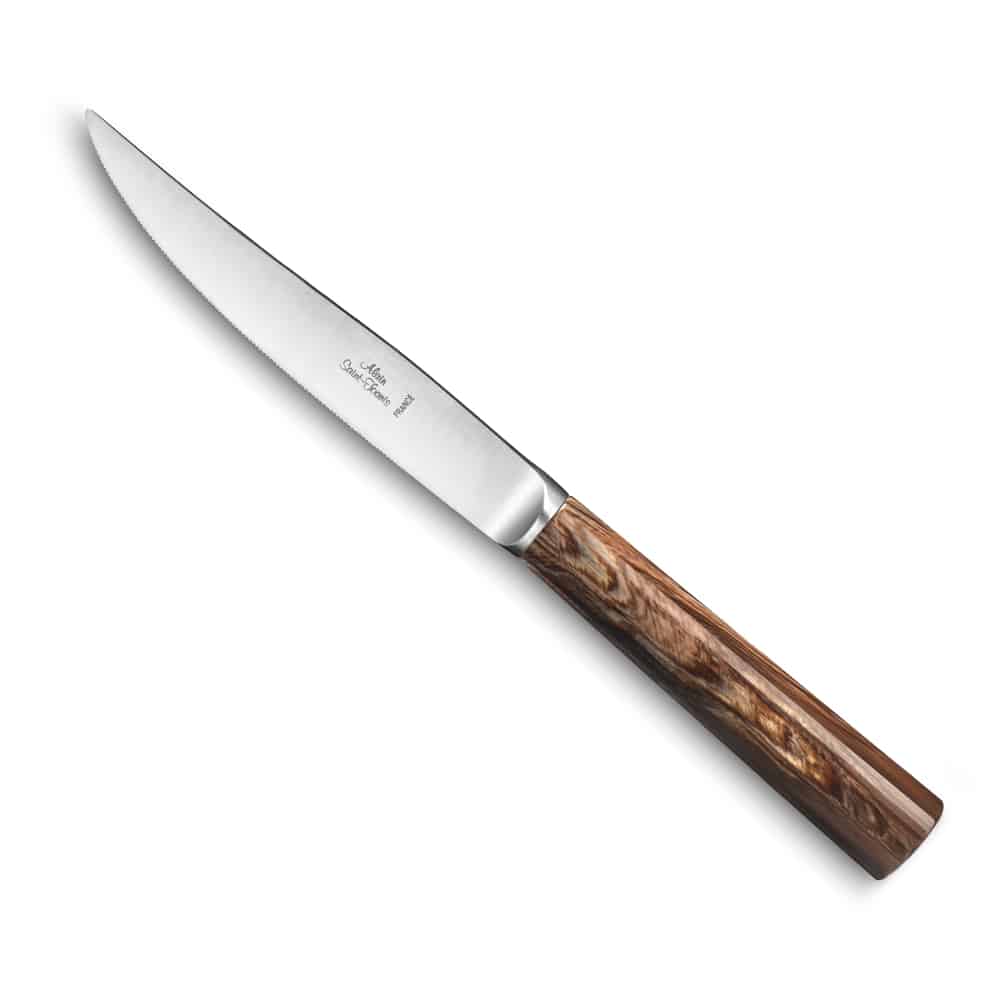
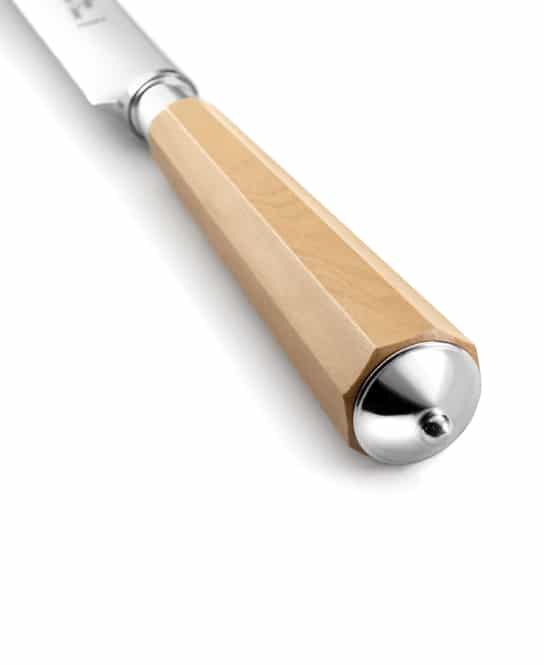
Knife, fork, spoon: choosing the right thickness of cutlery
The thickness of a set of cutlery is a sign of durability and top-of-the-range quality. But how do you choose the thickness of a knife, fork or teaspoon? Firstly, by selecting a product or a set of cutlery that is thick enough. For example, a stainless steel knife should be around three millimetres thick.
For wrought iron pieces, the thickness can be as much as eight millimetres.
From coffee spoons to collectors’ crockery, choosing a thick product is essential.
Stainless steel, stainless steel: the materials of the home for every table
Looking for a set of modern, designer cutlery? Let’s take a look at the materials found on the finest tables.
Stainless steel, also known as inox, is often used to make up a top-of-the-range cutlery collection. Resistant to stains and ageing, stainless steel dessert forks and spoons are easy to maintain.
Then there’s silver. Silver is more refined, although more delicate to maintain.
Whether we’re talking about a set of dessert forks or a complete service, good care of top-of-the-range cutlery requires rigour. After all, cutlery needs to be looked after between uses.
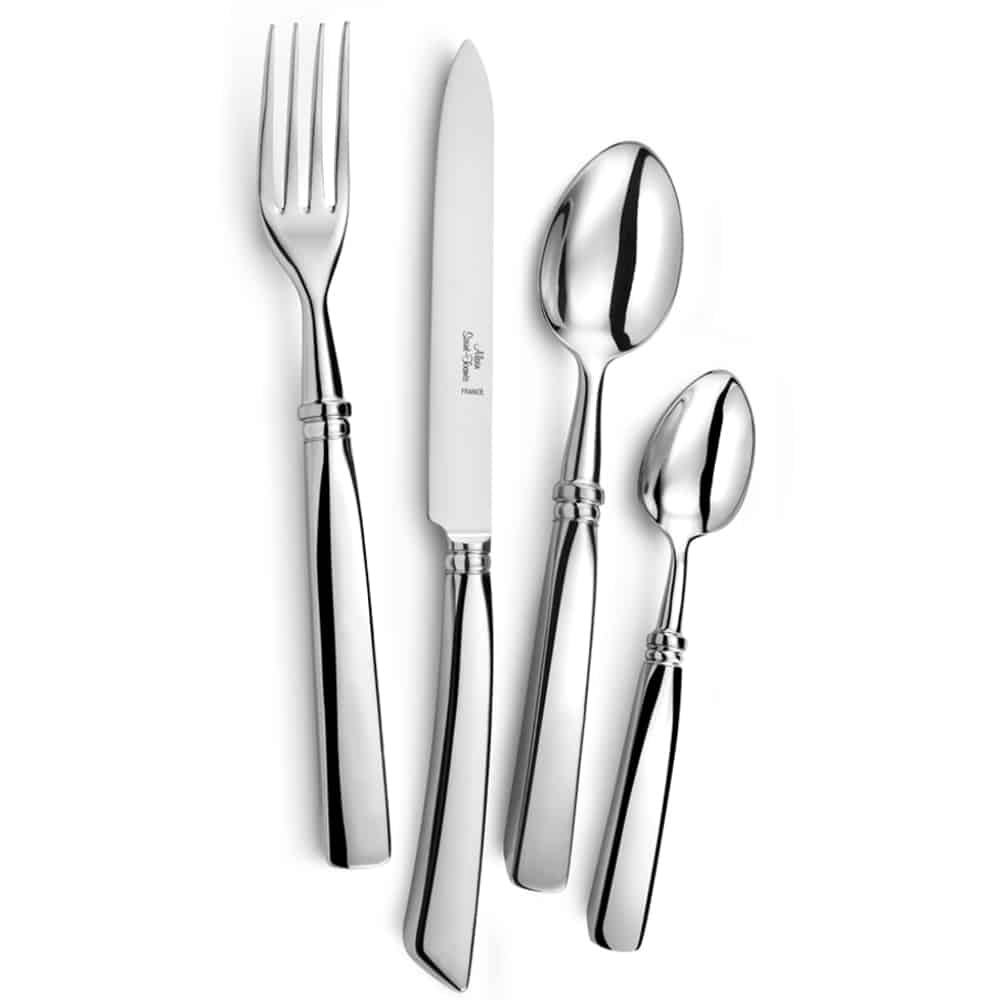
Cutlery care: from shiny teaspoons to gleaming steak knives
The art of the table is unique in that it showcases pieces that are both vintage and designer. Cutlery has the advantage of inspiring a wide range of table decorations. For example, vintage tables are often set with solid silver dishes.
Steel, silver, vintage or modern, it’s time to shine. As a result, preserving the mirror effect on luxury cutlery requires care and maintenance. The same goes for preserving the shine and durability of cutlery.
A few tips for looking after a set of table cutlery
Whatever the price of your cutlery or service, it should be washed in soapy water. Like many luxury items, the cutlery designed by Alain Saint Joanis can withstand temperatures of up to 55 degrees. What’s more, adding bicarbonate of soda to your soap solution will help your cutlery to shine.
You’ll also need a soft cloth rather than an abrasive sponge to clean your cutlery properly. After washing them in soapy water, rinse them in clean water. Then wipe them one by one to avoid prolonged contact with moisture.
These tips are also useful for polishing a set of silver cutlery. But there’s one trick that’s specific to silver-plated metal and solid silver. It involves immersing your silverware in a pot of boiling water lined with aluminium foil. Adding a spoonful of soda crystals will only enhance the shine and brilliance of your cutlery.
Set of kitchen cutlery and crockery collection: a low-cost product
Want to look after your new stainless steel cutlery? There are a few tricks you can use to keep your cutlery looking shiny and strong. The good news? Their price.
- Blanc de Meudon, an ally against stains on stainless steel. This product will also look after silver cutlery.
- A few drops of lemon juice: economical for a set or batch of crockery.
- Dedicated products for cleaning your kitchen and stainless steel cutlery.
- White vinegar: mixed with water, it’s an inexpensive way to look after your cutlery.
Catering: the shine and strength of steel, stainless steel or silver cutlery
Luxury hotels and restaurants are experts when it comes to maintaining stainless steel or stainless steel cutlery.
Do you have a serving spoon or fork? Or a dessert scoop or a stock of top-of-the-range forks? Here are some tips from the restaurant trade on how to look after your cutlery.
- Favour hand-cleaning your forks and cutlery.
- Keep your knives separate from the dessert spoons and forks in your collection.
- When caring for silver-plated cutlery, avoid bleaching products such as chlorine.
- Wipe your knives, forks and spoons with a dry cloth to keep them shiny.
The shine and durability of silver or stainless steel cutlery depend on care and the choice of the right products. To do this, it helps to have a good knowledge of tableware. But buying a good-value set of cutlery also counts!
